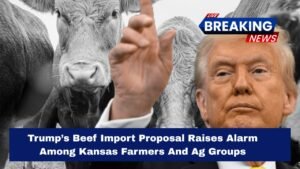California’s CalFresh program (California’s version of SNAP) is undergoing sweeping changes in 2025 that could significantly affect eligibility, benefit duration, exemptions, and more.
Many of these adjustments stem from recent federal legislation, especially the One Big Beautiful Bill (OBBB) and related USDA guidance.
What Is Changing: Major Eligibility Overhaul
1. Expansion of Work Requirement Age Window (ABAWD)
- Under OBBB, the age range subject to the ABAWD (Able-Bodied Adults Without Dependents) work/time-limit rule expands from 18–54 to 18–64.
- Those aged 60 or more remain exempt from general work mandates, but still may be subject to other SNAP rules.
2. Limiting Dependent-Child Exemptions
- The prior exemption for caregivers of children under age 18 is now reduced: only those responsible for children under age 14 qualify. Caregivers of teens 14–17 may fall under work rules unless another exemption applies.
3. Rollback of Certain Exemptions Introduced in 2023
- The FRA (Fiscal Responsibility Act of 2023) introduced temporary exemptions for veterans, homeless individuals, and former foster youth (age ≤ 24). OBBB removes those protections.
- As a result, these groups will again be subject to the 3-month/36-month rule unless other exemptions apply.
4. New Tribal & Native Exemptions
- OBBB adds new exemptions under the ABAWD rule for:
• “An Indian” (as per Indian Health Care Improvement Act definitions)
• “Urban Indian”
• “A California Indian”
Beneficiaries must verify tribal or Native status to qualify.
5. Waiver & Delay in California
- California obtained USDA’s approval for a statewide waiver of the ABAWD time limit from February 1, 2025 through January 31, 2026. During that period, even those who would otherwise be subject to work/time rules are not required to meet work obligations.
- After January 31, 2026, the stricter rules begin unless a further extension or waiver is granted.
6. Stricter Documentation & Work Reporting
- Households subject to work rules must document 80 hours/month of qualifying work, training, or community service to maintain benefits beyond 3 months.
- Additional paperwork and verification burdens will apply, making recertification and compliance more challenging.
7. Non-Citizen & Large-Household Limits
- Asylum seekers, refugees, and some non-citizen status holders may lose eligibility or face stricter barriers.
- For households larger than 9 or even 18 members, caps or adjustments may reduce benefit eligibility or amounts.
8. Income & Resource Limits
- Eligibility still depends on gross monthly income ≤ 200% of the Federal Poverty Level for household size.
- Example table of income limits (gross) for mid-2025 to 2026:
| Household Size | Maximum Gross Monthly Income |
|---|---|
| 1 | $2,610 |
| 2 | $3,526 |
| 3 | $4,442 |
| 4 | $5,360 |
| 5 | $6,276 |
| 6 | $7,192 |
| 7 | $8,110 |
| 8 | $9,026 |
Other resource, net income, and deduction rules still apply (shelter, medical, utility, etc.).
Transition Timeline & Key Dates
- July 4, 2025 – OBBB signed into law, triggering the new SNAP provisions.
- September 5, 2025 – USDA issues implementation memoranda on ABAWD exemptions.
- November 1, 2025 – California ordered by USDA to begin enforcing stricter work requirements for SNAP/CalFresh (for states without waiver).
- February 1, 2025 – January 31, 2026 – California’s ABAWD waiver period prevents enforcement of the time limits.
- After January 31, 2026 – California must enforce the new rules unless a further waiver is approved.
- Some stricter enforcement, especially work verification or paperwork phases, may be phased in as late as January 2027 in some commentary.
Potential Impact & Risks
- California has over 5 million CalFresh recipients currently.
- Local reporting (e.g., San Diego) estimates ~60,000 people in one county could lose access under new rules.
- Many benefit reductions stem not only from eligibility cuts but also from utility allowance changes, capping large households, and higher documentation burdens.
- Advocates warn that 97% of CalFresh households may be affected by cuts or rule changes per some analyses. (Note: figure cited in critical commentary)
- Food banks and community organizations across the state are preparing for increased demand.
How to Respond & What Beneficiaries Should Do
- Check whether waiver still applies in your county and up to what date (i.e. through Jan 31, 2026 in California statewide).
- Track work hours & documentation if you fall under 18–64 ABAWD and don’t qualify for other exemptions.
- Prepare for recertification: gather proof of income, work, tribal status (if applicable), dependent ages, etc.
- Explore exemptions: pregnancy, disability, age 60+, tribal status, caregiving under age-14 child.
- Watch local county All-County Letters (ACLs) from CDSS for county-level guidance and implementation schedules.
- Seek assistance from food banks, social services, and legal aid groups to navigate new rules.
FAQs
Will everyone aged 18–64 now be forced to meet work requirements?
Not exactly. Only ABAWDs (able-bodied without dependents) in that age range are subject to the new 3-month/36-month limit unless they meet work/training rules or fall under an exemption (age, disability, tribal status, caregiving under age 14, etc.).
What is the California waiver, and how does it affect these rules?
What happens after January 31, 2026 if no further waiver is granted?
Then, the stricter eligibility and work rules take full effect. Beneficiaries must comply with 80 hours/month work/training, report documentation, and recertify. Those who cannot fulfill these requirements risk losing benefits after 3 months within a 36-month period.



